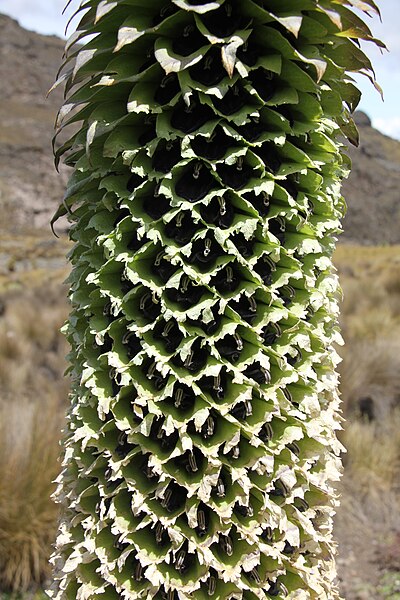Lobelia deckenii is a species of flowering plant in the family Campanulaceae. It is a giant lobelia endemic to the mountains of Tanzania. It is listed as a threatened plant of the forests of Cherangani hills, Kenya.
It grows in moist areas, such as valley bottoms and moorland, in contrast to Lobelia telekii which grows in a similar but drier habitat. These two species produce occasional hybrids. Lobelia deckenii plants usually produce multiple rosettes. Each rosette grows for several decades, produces a single large inflorescence and hundreds of thousands of seeds, then dies. Because individual plants have multiple rosettes, they survive to reproduce repeatedly, and plants with more rosettes flower more frequently. It is iteroparous.
Lobelia deckenii
A water-holding giant lobelia seen from above
A young inflorescence, its floral bracts still intact.
Inflorescence of the giant lobelia, its floral bracts shredded by the feet of perching bird pollinators
The family Campanulaceae, of the order Asterales, contains nearly 2400 species in 84 genera of herbaceous plants, shrubs, and rarely small trees, often with milky sap. Among them are several familiar garden plants belonging to the genera Campanula (bellflower), Lobelia, and Platycodon (balloonflower). Campanula rapunculus and Codonopsis lanceolata are eaten as vegetables. Lobelia inflata, L. siphilitica and L. tupa and others have been used as medicinal plants. Campanula rapunculoides may be a troublesome weed, particularly in gardens, while Legousia spp. may occur in arable fields.
Campanulaceae





